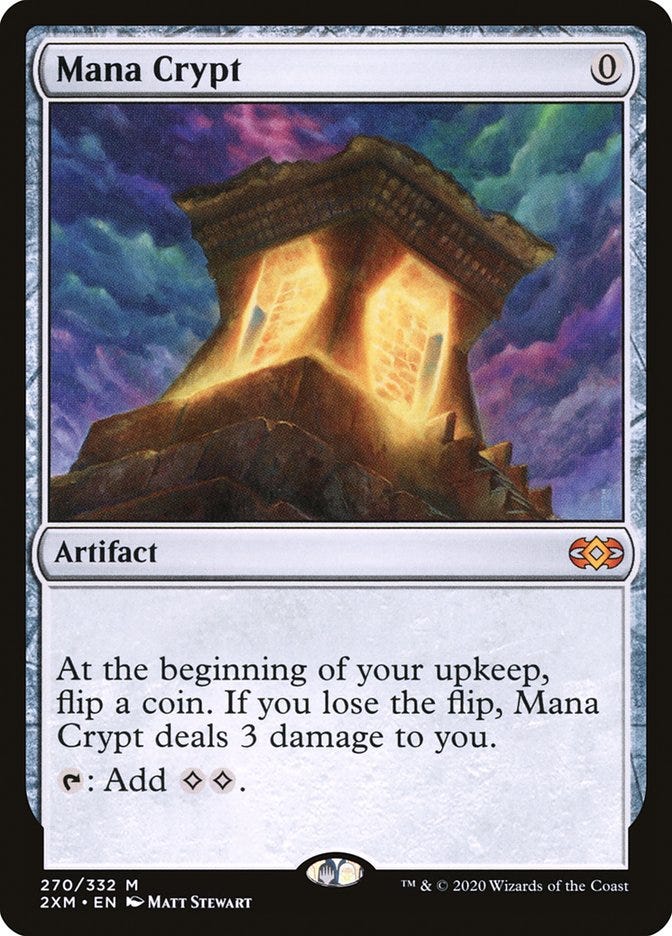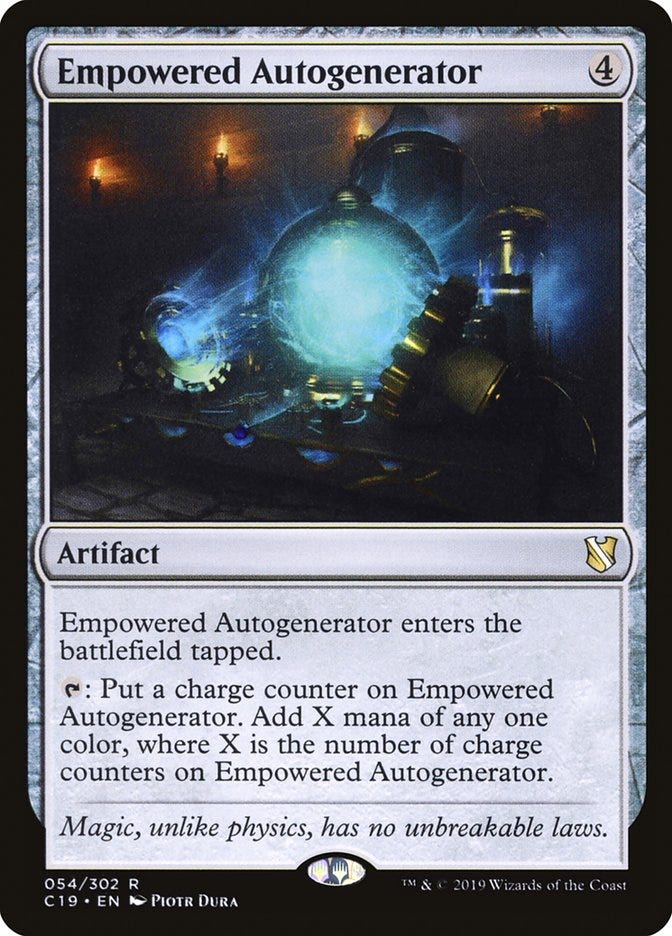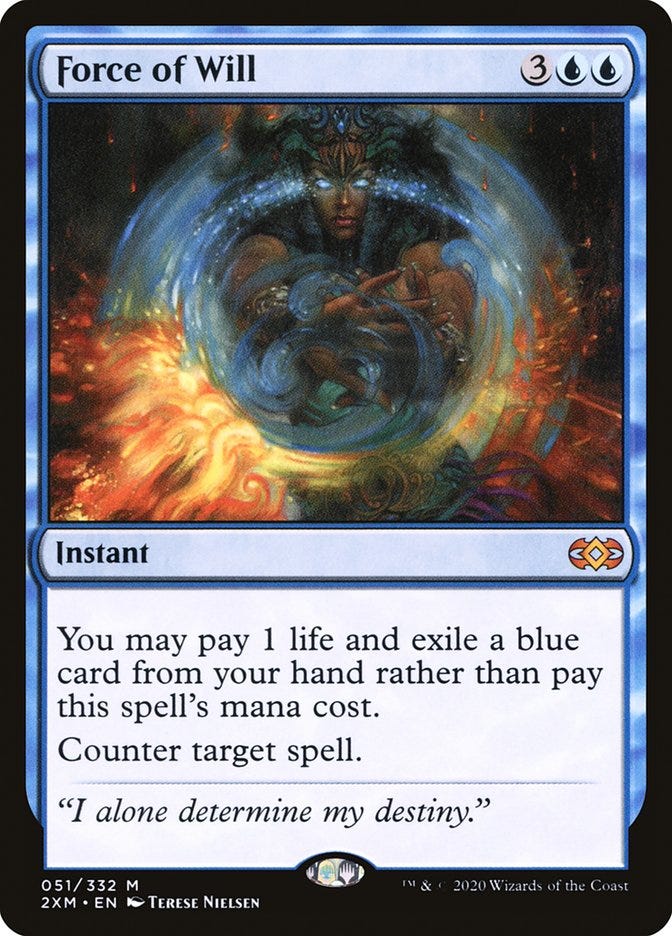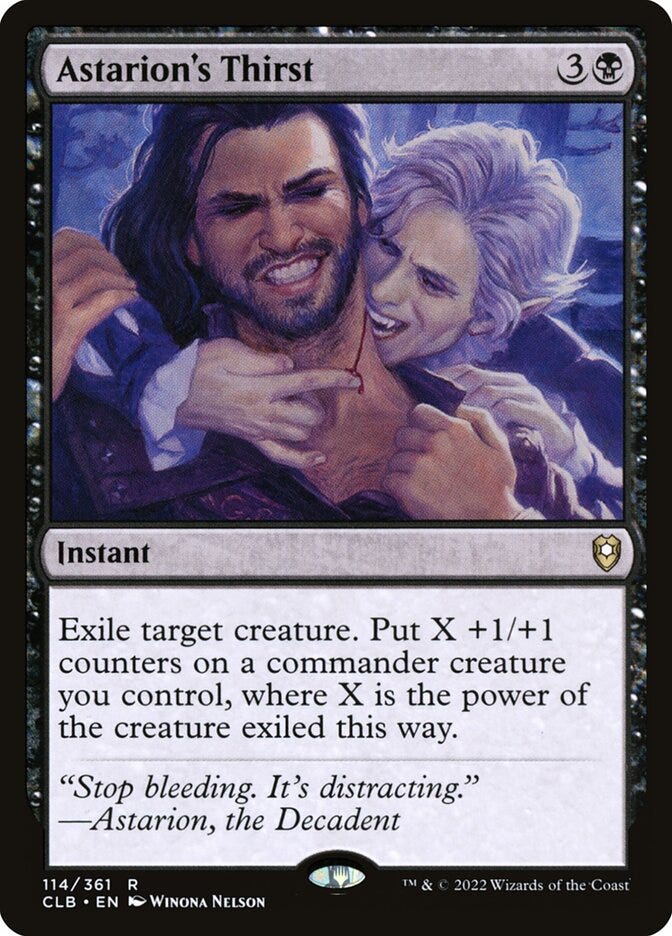A while ago I made a post describing my process of tuning decks for DeckTuner, and there I briefly mentioned a model of viewing decks that I haven’t written about that much. Almost every workshop that I do for this deckdoctoring has this sentence pretty close to the start of it:
“Ok, now let's talk about the three pillars of decent EDH decks: mana, draw, and interaction.”
That’s it. It’s simple. I believe every deck needs mana, card draw, and interaction in order to function decently. There’s a reason why, on my power level scale, having a decent number of these is what I consider the baseline for power level 5, which I describe as “THE BASELINE: It’s a Deck.”
The First Pillar: MANA
Mana is the first, and arguably the most important pillar in an EDH deck. Mana will make or break your deck, whether you have enough mana is the key determinator in whether or not you get to cast your spells. Mana is THE resource through which all your game actions are taken. Whether you’re drawing a card off of your Merfolk Looter in the Command Zone, or casting Exsanguinate for lethal, every game action you have the choice to take can have its casual chain traced back to, somewhere, at some point, spending mana.
With how I sort EDH decks, Mana is so important that it takes up two categories: Lands and Ramp. I imagine this is true for most decks (notwithstanding Oops! All Spells!) since most decks will want a decent number of lands to ensure they can cast their spells… and a decent number of ramp spells to ensure they can increase the amount of mana they have available to them over the course of the game.
There is plenty to be said about Lands (utility lands and fixing lands and land counts, oh my!), but for the sake of example I’m going to show some pieces of ramp…
Exhibit A: Competitive Ramp
When it comes to competitive ramp, speed is the name of the game. Games can go sort of long, but they’re intended to end fast - so the long term downside that Mana Crypt proposes in taking 3 damage doesn’t have that much time to come to fruition. Further, many competitive game-enders will end the game all at once and not pester your opponents with digging through your life total, so you’re free to pay more of it as the game goes on.
Exhibit B: Casual Ramp
In a casual game, speed is usually not as important as late game value. In this case, Empowered Autogenerator shows us what that might mean. We lose a lot of speed since its mana cost is much higher, but we make up for it in value: if the game goes on, it can accumulate a lot of counters and tap for a ton of mana. Many casual pieces are synergy pieces, too… for example, the generator here works well when you can untap it or proliferate its counters.
The Second Pillar: DRAW
Once your deck has figured out how to make mana, you’ll find you can play just about any spell that you have in your hand. But… once you play all the spells in your hand, you don’t have anything else to do (especially if you eat a well-timed board wipe)! I’ve heard some arguments that draw may be more important than mana since, similar to mana, pretty much every game action can be casually linked to you drawing things at some point (and indeed, every game starts with you drawing an opening hand). Cards, like mana, are a resource that you have to accumulate and spend in order to play the game.
The nice “safety net” of this pillar is that, unless someone plays cards of ill-omen, the game gives you a small pittance of card draw for free. You get your opening hand and one card every turn for the entire game. Though, as I’ve described before, you really should be hoping to draw more cards per turn than that (especially since you will invariably run into a pocket of things you don’t need and want the draw power to power through them). Here, I’ll also be making a distinction between Card Advantage, Card Selection, and Virtual Card Advantage:
Card Advantage: Increases the quantity of cards in your hand. (e.g. Divination)
Card Selection: Increases the quality of cards in your hand. (e.g. Bonded Fetch)
Virtual Card Advantage: Does not change your hand’s size or compisition, but gives you cards in some other way (e.g. Lier, Disciple of the Drowned) or gives you something that may be equivilant to a card (e.g. Bitterblossom).
And, importantly, I want to make sure that I’m valuing card advantage over the other forms of draw, and making sure my draw package has a decent amount of card advantage spells.
Exhibit A: Competitive Draw
Rhystic Study (Honorable Mention to Necropotence and Ad Nauseum) has long been the poster child for best-of-the-best competitive draw power in EDH. It makes virtually every blue-inclusive cEDH deck, and it’s easy to see why given the number of cards that are continiously drawn off of the notorious question: “are you paying the 1?” Again, in competitive play, speed is the name of the game - players will cast a lot of spells, and they’ll either be forced to slow down to pay 1 or give you a lot of cards.
Exhibit B: Casual Draw
Fact or Fiction is a well known draw piece that sees a lot of play in casual play. For four mana, at instant speed, you get to play a fun minigame where your opponent tries to figure out what you want and you can always put the best pile in your hand. Further, since in casual games players are less likely to “just win out of nowhere” it is commonplace that an archenemy will exist at the table for several turns, and you can commonly get yourself generous deaks (sometimes as many as five cards) to try to help put an end to the archenemy’s reign.
The Third Pillar: INTERACTION
My third pillar of a functional deck is interaction. The resource being represented by interaction is time. Magic: the Gathering™ is a turn-based game, so naturally time in this game is represented by turns (and sub-delineated by the parts of the turn, the stack, and priority passing). If you have the ability to kill someone NEXT TURN, but someone else is winning THIS TURN, having the right interaction in hand can buy you the turn you need to do your thing.
Further, interacting in a game is a big part of what MTG a fair and balanced game, rather than simply a race to achieve your wincon or an uninterrupted game of solitaire. We’re here to play with our friends, right? But if we don’t bring some interaction to deal with their stuff… we’re not really playing with them so much as playing next to them and hoping we win first.
Exhibit A: Competitive Interaction
Force of Will is a staple in competitive blue decks because, again, speed is the name of the game. This spell may look expensive, but don’t let it’s mana value of five fool you… this spell is actually free. Well, it will cost you a card and a life, but it won’t cost you any mana, anyway. Not only does it not cost mana (allowing you to cast it on someone else’s turn one when you haven’t even dropped a land yet), but it answers just about anything since it can counter any type of threat while its still on the stack.
Exhibit B: Casual Interaction
Astarion’s Thirst is a great example of a casual interaction piece. It’s not the cheapest at four mana, and it only hits creatures… but it does come with an upside that can allow you to make swingy plays and hit someone for an unexpected amount of commander damage. Also, it’s still instant speed (thank the gods - I can’t stand sorcery speed spot removal, though some casual players may use it) and does exile, which is more permanent than putting it in a graveyard. Like with the ramp above, casual players are more likely to forgo speed in favor of flexibility or late game upside.
The Wrap
The cards shown to showcase what mana, draw, and interaction may look like in a casual vs competitive environment are for example only. A deck is not automatically competitive if it includes Rhystic Study. The important thing is that you include enough ramp, draw, and interaction to make your deck function while being somewhat mindful of how powerful those effects are to try to match it to your pod.
Note also that I didn’t particularly talk about “wincons.” This is for a few reasons: Firstly, this concept is often used for “deck doctoring” people’s decks by tailoring the supporting cards to their meta, and usually people already have a good idea of what they want the wincon to be by the time they’re asking for help. Secondly, in my experience, wincons are usually the last thing to “level up” when a deck is incrementing in power. People will run fun swingy cards to win the game, but they won’t start working towards streamlined ways to win unless they’re playing at a competitive power where their draw, mana, and interaction are already pushed to the extreme… (and in those cases, they might forgo some of the pillars to lean into their wincon such as running a Demonic Tutor over more card draw).
Strategy games are ultimately about managing resources and MTG is rife with all sorts of things you can treat as a resource. You can treat life as a resource with something like K’rrik (or just by taking attacks to the face). You can treat your deck size as a resource. You can even treat creatures (a.k.a. bodies) as a resource with something like Ashnod’s Altar. You can convert one resource to another (such as using Treasonous Ogre to convert life into mana). You can avoid treating some of these things like resources too (you don’t have to treat life as a resource if you don’t want to, and instead treat it like a simple health bar). But, in order to play, every deck needs the three basic resources that make up the pillars of EDH:
Mana (which comes from lands and ramp)
Cards (which come from draw)
Time (which you buy with Interaction)
So remember to consider these resources when building your decks, and make sure your decks include a healthy amount of them!
Happy Deckbuilding!







